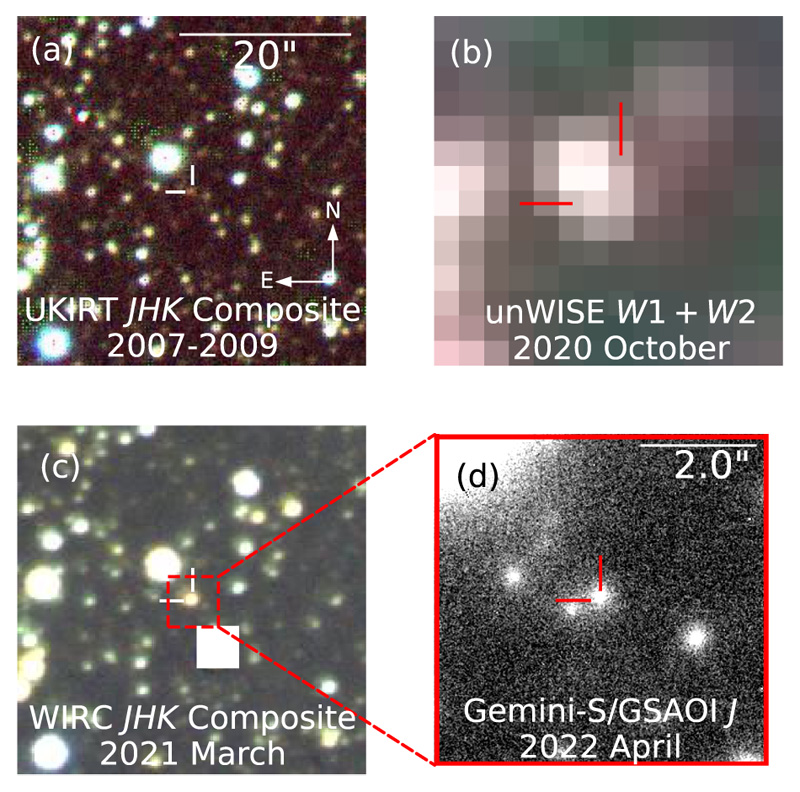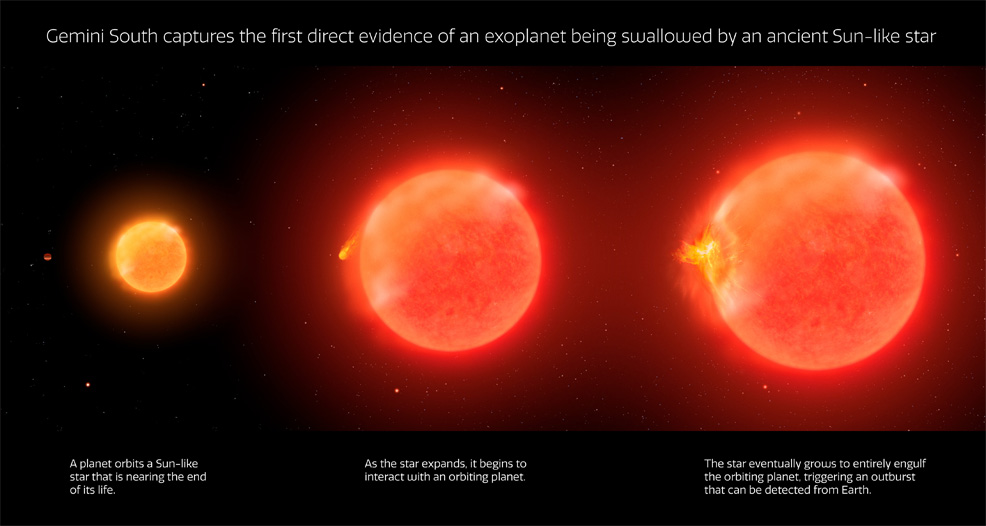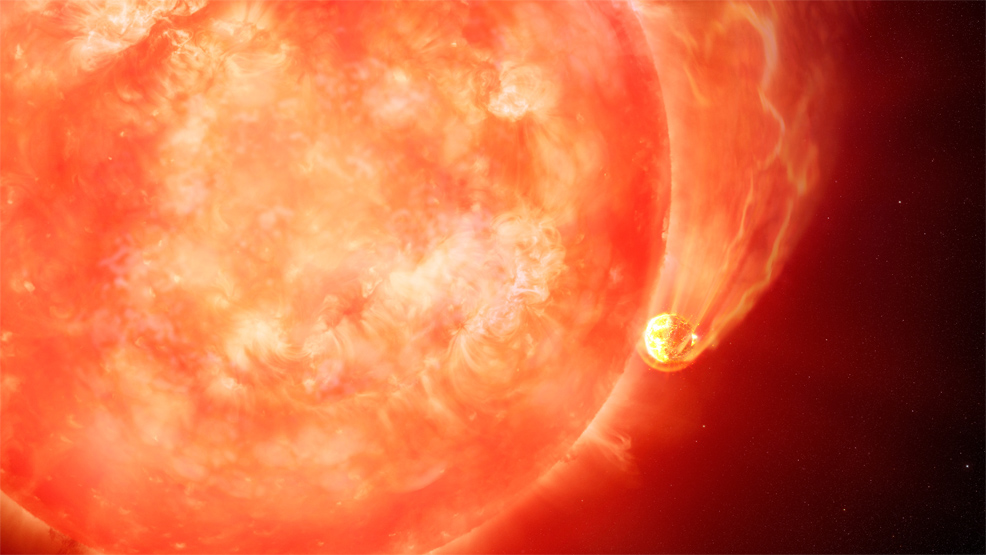
16th May 2023 Star consuming exoplanet offers preview of Earth's fate Astronomers report the first direct evidence of an exoplanet being swallowed by an ancient Sun-like star, a fate that likely awaits the Earth in around five billion years.
Credit: International Gemini Observatory/NOIRLab/NSF/AURA/M. Garlick, ESA/Hubble (M. Kornmesser & L. L. Christensen), M.Paredes, Kwon O Chul, N. Bartmann
Astronomers using the Gemini South telescope in Chile have observed the first evidence of a dying Sun-like star engulfing an exoplanet. The "smoking gun" of this event was seen in a long and low-energy outburst from the star – the tell-tale signature of a planet skimming along a star's surface. This never-before-seen process may be a preview for Earth's ultimate fate, when our own Sun nears the end of its life in about five billion years. By studying countless stars at various stages of their evolution, astronomers have been able to piece together an understanding of the life cycle of stars and how they interact with their surrounding planetary systems as they age. This research confirms that when a Sun-like star nears its end, it expands anywhere from 100 to 1,000 times its original size, eventually engulfing the system's inner planets. Such events are estimated to occur only a few times each year across the entire Milky Way galaxy. While past observations have hinted at the aftermath of planetary engulfments, astronomers have never caught one in the act, until now. This new study is the first direct evidence of such an event happening while being observed. Using a high-resolution, near-infrared instrument called the Gemini South Adaptive Optics Imager (GSAOI), astronomers followed the changes occurring to a star about 13,000 light-years from Earth. This event – which they catalogued as ZTF SLRN-2020 – is described as "a short-lived optical outburst in the Galactic disk accompanied by bright and long-lived infrared emission."
Distinguishing a planetary engulfment from other types of outbursts – like solar flares and coronal mass ejections – is difficult and requires high-resolution observations to pinpoint the exact location of an outburst, and long-term measurements of brightness without contamination from nearby stars. The GSAOI instrument provided these essential data, thanks to its powerful adaptive-optics capabilities, which help to correct for Earth's atmospheric distortions and obtain sharper images. The outburst from this event lasted for about 100 days and the characteristics of its light curve, as well as the ejected material, gave astronomers insight into the mass of the star and that of its engulfed planet. The ejected material consisted of about 33 Earth masses of hydrogen and about 0.33 Earth masses of dust. "That's more star- and planet-forming material being recycled, or burped out, into the interstellar medium due to the star eating the planet," said Ryan Lau, astronomer and co-author of a study published this month in the journal Nature. From their detailed analysis, the team estimated the progenitor star to be around 0.8−1.5 times the mass of our Sun, and the engulfed planet 1−10 times the mass of Jupiter.
Click to enlarge
"Gemini South continues to expand our understanding of the Universe and these new observations support predictions for the future of our own planet," said the Gemini Observatory's program director, Martin Still. "This discovery is a wonderful example of the feats we can accomplish when we combine world-class telescope operations and cutting-edge scientific collaboration." Now that the signatures of a planetary engulfment have been identified for the first time, astronomers have improved metrics they can use to search for similar events happening elsewhere in the cosmos. This will be especially important when the Vera C. Rubin Observatory comes online in 2025. "I think there's something pretty remarkable about these results that speaks to the transience of our existence," added Lau. "After the billions of years that span the lifetime of our Solar System, our own end stages will likely conclude in a final flash that lasts only a few months."
Click to enlarge
Comments »
If you enjoyed this article, please consider sharing it:
|









